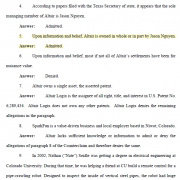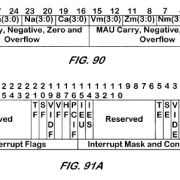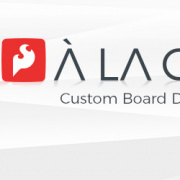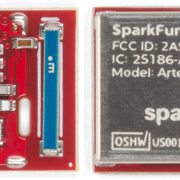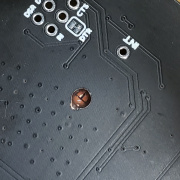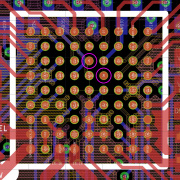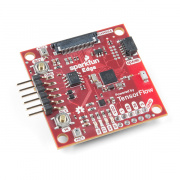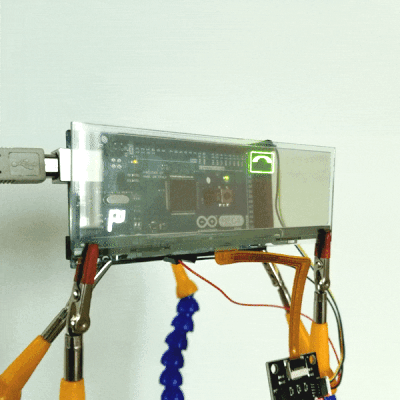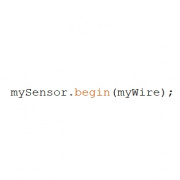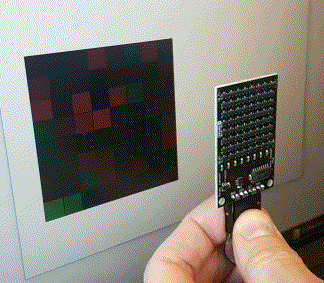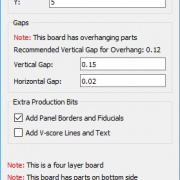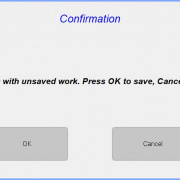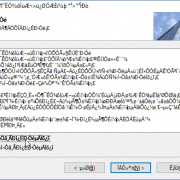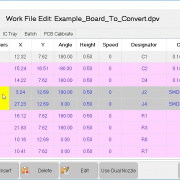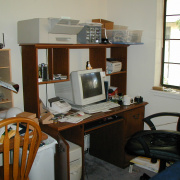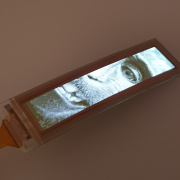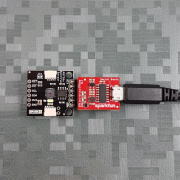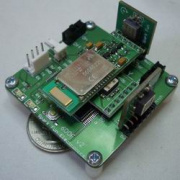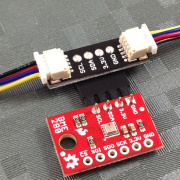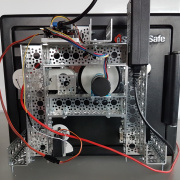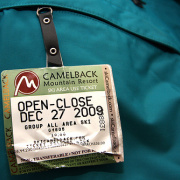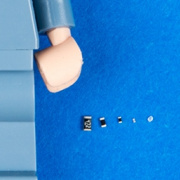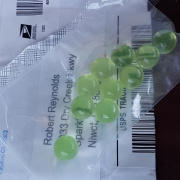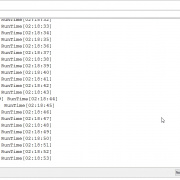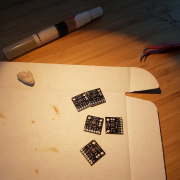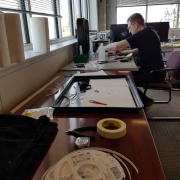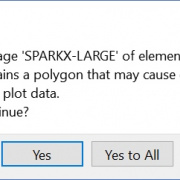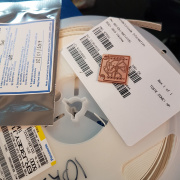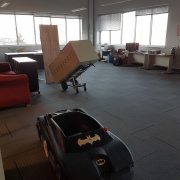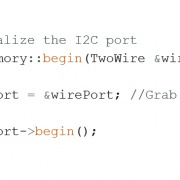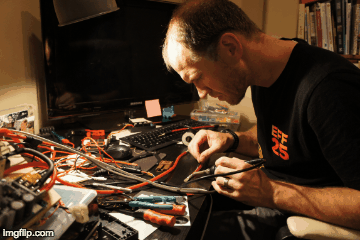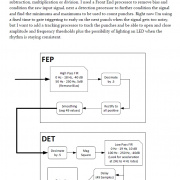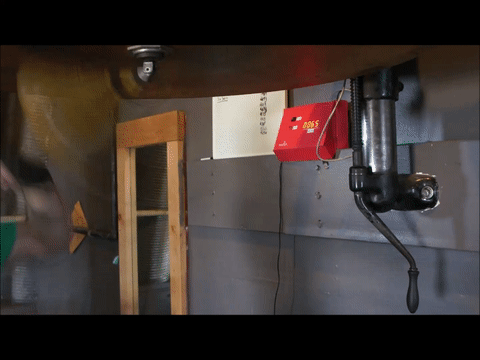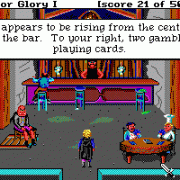Nate
Member Since: August 14, 2006
Country: United States
Profile
Bio
Nathan Seidle grew up in Tulsa, Oklahoma and transplanted himself to Colorado during college.
Role
Hand in every cookie jar. I run SparkX (and eat cookies).
Organizations
SparkFun Electronics
Spoken Languages
English and Datasheet
Programming Languages
C, VB, and evil Makefiles
Universities
Oklahoma School of Science and Mathematics - class of 2000 (Oklahoma City, OK), University of Colorado - class of 2004 (Boulder, CO).
Interests
Crew, hiking, boxing, and the occasional snowboard jump.
Websites
www.sparkfun.com
We've written hundreds of libraries and made lots of mistakes. Learn the basics of how to write a good library.
The costs and time required to get the world's first open source BLE module certified with the FCC.
Any FCC certified module needs a tin can to protect and prevent RF emissions. Check out how we did it for Artemis!
Checkout how we drilled through the back of a PCB in order to solder to the hidden pads under a cellular module.
Learn how we created our own SMD module using PCB tips and tricks for blind and buried vias.
SparkFun is pleased to announce a new line of development tools to help implement edge computing, including voice and image recognition.
If we've learned one thing at SparkFun it's that geeks love to talk about their projects! We can't wait to share what we've been cooking. Check out the pile of new products, sensors and breakout boards!
It's not pretty but we've come up with a way to make I2C based libraries even more flexible. Now you can pass a software I2C port into a library!
We've got the magnetic tile back in stock and the first boards made with Buzzard are in!
Watch out, we’ve been translating technical English… How to install and edit the SparkFun English file for the Charm High software.
To celebrate our "crystal anniversary," here's a collection of the stories, blog posts, products and adventures from 15 years of making crazy things.
Wherein I felt the urge to respond to a recent WIRED article that hits close to home.
What's in the box?! Opening a safe with a little intelligence and a little brute force.
We use 0603 SMD packages but the electronics world uses much smaller sized components.
When writing a library, pass in I2C ports to make the library more useful on different platforms.
Looking for information in the noise: a contest to crowdsource a better algorithm for accelerometer data.
SparkFun RTK Facet L-Band Hookup Guide
June 9, 2022
Setup the RTK Facet L-Band in minutes to begin gathering millimeter level geospatial coordinates.
Qwiic ToF Imager - VL53L5CX Hookup Guide
January 27, 2022
Hookup Guide for the Qwiic ToF Imager - VL53L5CX
GNSS Timing Breakout - ZED-F9T (Qwiic) Hookup Guide
January 20, 2022
Follow this guide to add up to 5 nanosecond timing accuracy under clear skies with no external GNSS correction with the GNSS Timing Breakout - ZED-F9T (Qwiic).
SparkFun RTK Facet Hookup Guide
December 16, 2021
Setup the RTK Facet in minutes to begin gathering millimeter level geospatial coordinates.
1W LoRa MicroMod Function Board Hookup Guide
November 11, 2021
Everything you need to get started with the 1W LoRa MicroMod function board; a MicroMod function board that provides LoRa capabilities for your MicroMod project. Must be used in conjunction with a MicroMod main board and processor.
SparkFun RTK Express Hookup Guide
June 21, 2021
Learn how to use the enclosed RTK Express product to achieve millimeter level geospatial coordinates.
How to Upgrade Firmware of a u-blox GNSS Receiver
March 26, 2021
A few steps and you'll upgrade to the latest features on a u-blox GNSS receiver.
SparkFun RTK Surveyor Hookup Guide
December 3, 2020
Learn how to use the enclosed RTK Surveyor product to achieve millimeter level geospatial coordinates.
Getting Started with MicroMod
October 21, 2020
Dive into the world of MicroMod - a compact interface to connect a microcontroller to various peripherals via the M.2 Connector!
Designing with MicroMod
October 21, 2020
This tutorial will walk you through the specs of the MicroMod processor and carrier board as well as the basics of incorporating the MicroMod form factor into your own PCB designs!
MicroMod Machine Learning Carrier Board Hookup Guide
October 21, 2020
Get hacking with this tutorial on our Machine Learning Carrier Board!
MicroMod Data Logging Carrier Board Hookup Guide
October 21, 2020
Get started with some customizable MicroMod data logging with the Data Logging Carrier Board.
MicroMod Artemis Processor Board Hookup Guide
October 21, 2020
Get started with the Artemis MicroMod Processor Board in this tutorial!
How to Build a DIY GNSS Reference Station
October 15, 2020
Learn how to affix a GNSS antenna, use PPP to get its ECEF coordinates and then broadcast your own RTCM data over the internet and cellular using NTRIP to increase rover reception to 10km!
Setting up a Rover Base RTK System
October 14, 2020
Getting GNSS RTCM correction data from a base to a rover is easy with a serial telemetry radio! We'll show you how to get your high precision RTK GNSS system setup and running.
OpenLog Artemis Hookup Guide
August 20, 2020
How to use and re-program the OpenLog Artemis, an open source datalogger. The OLA comes preprogrammed to automatically log data. The OLA can also record serial data, analog voltages, or readings from external Qwiic-enabled I2C devices. Some of these Qwiic-enabled devices include GPS/GNSS modules, pressure, altitude, humidity, temperature, air quality, environment, distance, and weight sensors.
Hookup Guide for the SparkFun RedBoard Artemis
August 28, 2019
Get started with the RedBoard Artemis - all the functionality of the SparkFun Artemis module wrapped in the familiar Uno R3 footprint
Hookup Guide for the SparkFun RedBoard Artemis ATP
August 28, 2019
Get started with the RedBoard Artemis ATP - all the functionality of the SparkFun Artemis module wrapped in the Mega Arduino Footprint
Hookup Guide for the SparkFun RedBoard Artemis Nano
August 28, 2019
Get started with the powerful RedBoard Artemis Nano
Artemis Development with Arduino
June 20, 2019
Get our powerful Artemis based boards (Artemis Nano, BlackBoard Artemis, and BlackBoard Artemis ATP) blinking in less than 5 minutes using the SparkFun Artemis Arduino Core!
Designing with the SparkFun Artemis
June 20, 2019
Let's chat about layout and design considerations when using the Artemis module.
LED Gumball Machine
April 24, 2019
Hacking gumball machines to make the world a happier, blinkier place.
Qwiic Scale Hookup Guide
April 11, 2019
Create your own digital scale quickly and easily using the Qwiic Scale!
GNSS Chip Antenna Hookup Guide
April 4, 2019
You've always wanted to experiment with those tiny GPS antennas. Now you can!
GPS-RTK2 Hookup Guide
January 14, 2019
Get precision down to the diameter of a dime with the new ZED-F9P from u-blox.
Qwiic Twist Hookup Guide
December 13, 2018
Take your volume knob beyond 11 with the Qwiic Twist digital RGB LED encoder via I2C!
Spectral Triad (AS7265x) Hookup Guide
November 8, 2018
Learn how to wield the power of 18 channels of UV to NIR spectroscopy with AS72651 (UV), AS72652 (VIS), and AS72653 (NIR) sensors!
What is GPS RTK?
September 14, 2018
Learn about the latest generation of GPS and GNSS receivers to get 14mm positional accuracy!
GPS-RTK Hookup Guide
September 13, 2018
Find out where you are! Use this easy hook-up guide to get up and running with the SparkFun high precision GPS-RTK NEO-M8P-2 breakout board.
Getting Started with U-Center for u-blox
September 13, 2018
Learn the tips and tricks to use the u-blox software tool to configure your GPS receiver.
Beginner's Guide to KiCad
October 12, 2017
An in-depth tutorial covering schematic capture, PCB layout, library editing, and gerber generation using this amazing open source PCB creation tool.
Gas Pump Skimmers
September 6, 2017
Teardown of gas pump skimmers along with how to detect and block them.
Reading and Writing Serial EEPROMs
August 11, 2017
EEPROM is a great way to add extra memory to your microcontroller project. Wait 'til you see how easy it is to use!
Arduino Weather Shield Hookup Guide V12
March 2, 2017
Read humidity, pressure and luminosity quickly and easily. Add wind speed, direction and rain gauge for full weather station capabilities.
Simultaneous RFID Tag Reader Hookup Guide
February 23, 2017
A basic guide to getting started with the RFID Tag Reader breakout and how to read and write multiple RFID tags over multiple feet!
RFID Basics
February 23, 2017
Dive into the basics of Radio Frequency Identification (RFID) technology.
Lessons in Algorithms
December 21, 2016
Learn techniques on how to use Finite Impulse Response (FIR) filters and other data-processing tools to turn data into information.
Building an Autonomous Vehicle: The Batmobile
December 6, 2016
Documenting a six-month project to race autonomous Power Wheels at the SparkFun Autonomous Vehicle Competition (AVC) in 2016.
MAX30105 Particle and Pulse Ox Sensor Hookup Guide
December 1, 2016
The SparkFun MAX30105 Particle Sensor is a flexible and powerful sensor enabling sensing of distance, heart rate, particle detection, even the blinking of an eye. Get ready. Set. Shine!
OpenScale Applications and Hookup Guide
July 22, 2016
OpenScale allows you to have a permanent scale for industrial and biological applications. Learn how to use the OpenScale board to read and configure load cells.
How to Build a Remote Kill Switch
May 31, 2016
Learn how to build a wireless controller to kill power when things go... sentient.
Alphanumeric GPS Wall Clock
January 26, 2015
This is a GPS controlled clock - a clock you truly never have to set! Using GPS and some formulas, we figure out what day of the week and if we are in or out of daylight savings time.
How to Use a Multimeter
January 9, 2015
Learn the basics of using a multimeter to measure continuity, voltage, resistance and current.
How Chip-On-Boards are Made
May 28, 2014
COB or chip-on-board is a low cost way of soldering an IC to a PCB. Checkout this tutorial to see how it is done!
How Lithium Polymer Batteries are Made
May 28, 2014
We got the opportunity to tour the Great Power Battery factory. Checkout how LiPos are made!
How LEDs are Made
May 28, 2014
We take a tour of a LED manufacturer and learn how PTH 5mm LEDs are made for SparkFun.
ML8511 UV Sensor Hookup Guide
March 13, 2014
Get up and running quickly with this simple to use UV sensor.
HID Control of a Web Page
March 12, 2014
Learn how to move a slider on a webpage and make a motor spin. We connect HTML and HID to read sensors and interface with the physical world.
Wireless Arduino Programming with Electric Imp
February 24, 2014
Reprogram your Arduino from anywhere in the world using the Tomatoless Boots wireless bootloader with the Electric Imp.
Das Blinken Top Hat
January 22, 2014
A top hat decked out with LED strips makes for a heck of a wedding gift.
MPL3115A2 Pressure Sensor Hookup Guide
December 5, 2013
Getting started with the MPL3115A2 Pressure Sensor.
Using OpenSegment
April 1, 2013
How to hook up and use the OpenSegment display shield. The OpenSegment is the big brother to the Serial 7-Segment Display. They run on the same firmware, however the OpenSegment is about twice as big.
Analog to Digital Conversion
February 7, 2013
The world is analog. Use analog to digital conversion to help digital devices interpret the world.
Battery Technologies
February 6, 2013
The basics behind the batteries used in portable electronic devices: LiPo, NiMH, coin cells, and alkaline.
Installing an Arduino Library
January 11, 2013
How do I install a custom Arduino library? It's easy! This tutorial will go over how to install an Arduino library using the Arduino Library Manager. For libraries not linked with the Arduino IDE, we will also go over manually installing an Arduino library.
Nest Thermostat Teardown
November 29, 2011
See the inner-workings of the most advanced thermostat to hit the market, the Nest.
Heartbeat Straight Jacket
June 4, 2009
An EL project that displays one person's heartbeat on another person's costume.
-
Sorry we don't have better dimensional drawings of the connectors themselves, we never imagined a user would want to spin their own enclosure! Here is a rough drawing showing the connector spacing but you'll need to model the connectors themselves. You can get the EAGLE files here to get the board outline. Hope this helps a little!
-
A 12 month warranty is included.
-
The LoRa radio is specifically tuned to 902-928MHz and will not be compatible at 868MHz.
At this time we don't plan on a EU version for LoRa support.
-
Yes, the Torch supports Galileo HAS. Please see our Torch test results here (summary, ~80mm was achieved in under 10 minutes). We have not tested with Esri. You can see the current tested software here. We have not tested performance when BeiDou is turned off but constellation control is supported.
-
While we sell LTE options, it's not trivial to hook one to the RTK mosaic. Alternatively, the RTK mosaic can easily be put into WiFi mode and connect to the hotspot on your choice. If you don't want to use your cell phone for the connection, a mobile hot spot can be used as well.
-
The Torch is compatible with Field Genius but we haven't yet tested the tilt sensor. We believe it will be since the RTK Torch modifies the NMEA before transmission to the GIS software (so it shouldn't know or care that tilt compensation is happening) but we all know what happens when you assume... We'll try to get it tested this follow week.
-
Unfortunately the RTK mosaic does not support ESP-Now and we do not plan to add it at this time. This station is primarily designed for ethernet casting (either over WiFi or a wired connection).
-
The Torch has an L1 antenna phase center of 115mm, and a L2/L5 phase center of 118mm. These are distances from the antenna reference point (basically the bottom of the unit). We're checking on this, but if the GIS app only has room for one ARP (or more technically 'ARP to APC'), the consensus seems to be to average the APCs: 115+118 / 2 = 116.5mm. So if you have a 1.8m long pole, you need to enter 1.8+0.1165 = 1.9165m into SW Maps. If the data entry is limited to three decimals then it's deal's choice of what to do with the 500 microns. At that point the thermal expansion of your surveying pole needs to be accounted for...
-
Yes.
-
Yup. Fixed. Thanks!


